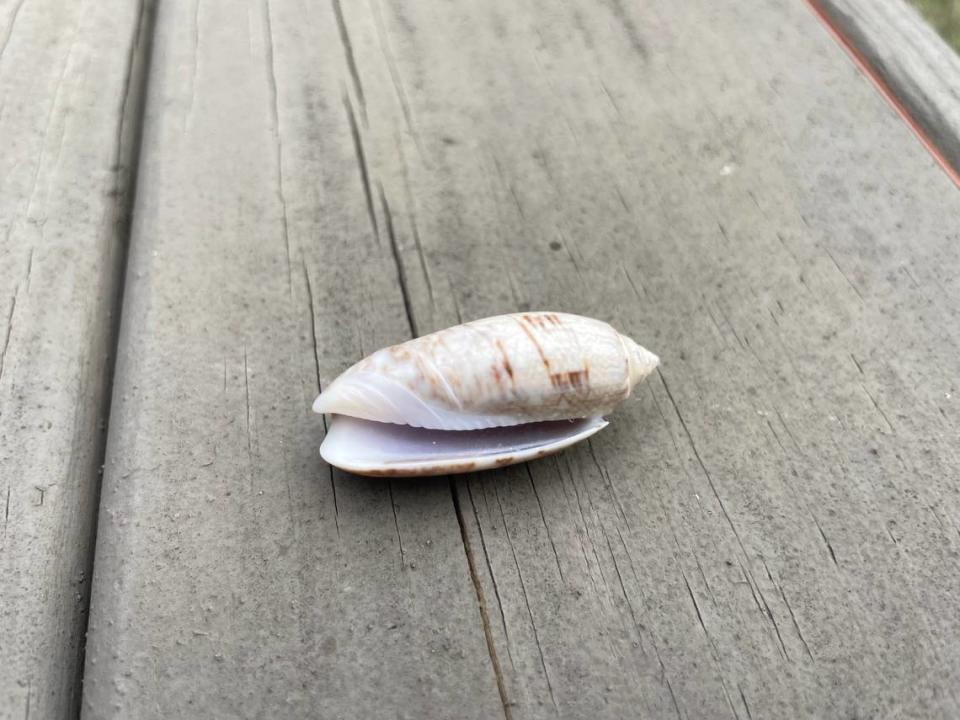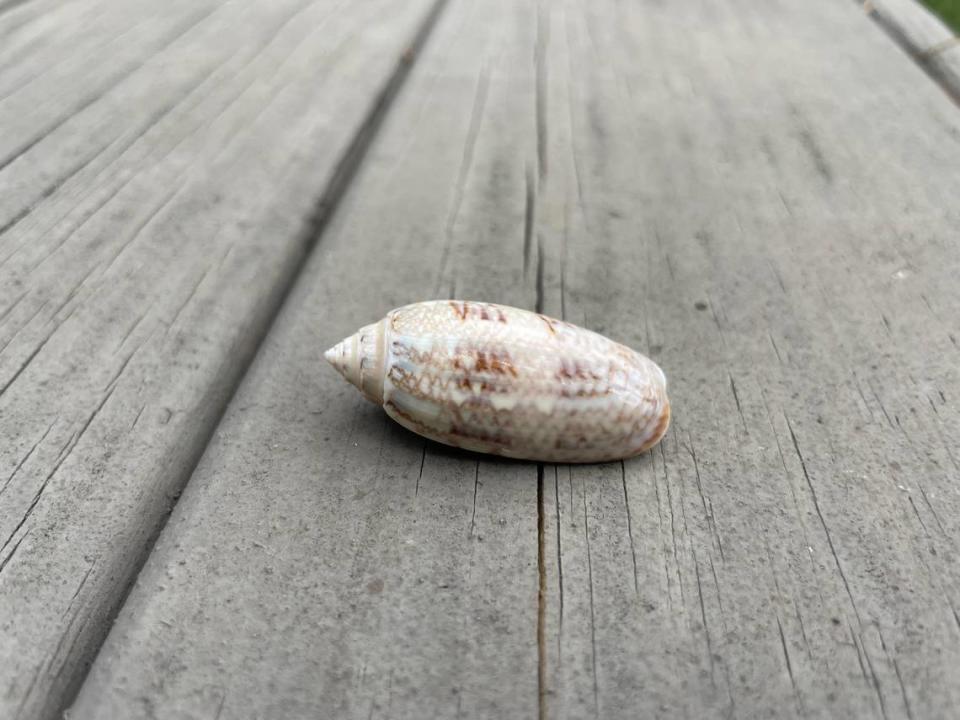Did you know SC has a state seashell? What to know about it and the critter that calls it home
Did you know the Palmetto State has a seashell representative?
The South Carolina state shell is officially listed as the lettered olive (Oliva sayana).
Have you heard of it?
The seashell was designated as the official State Shell by Act No. 360 of 1984.
The Lettered Olive seashell was first found and later named by Dr. Edmund Ravenel of South Carolina. He first recognized the lettered olive back in 1834.

Ravenel chose the name for the seashell because of its appearance of hieroglyphic markings. This beautiful shell outwardly displays a smooth and shiny, cylindrical shape. It is typically found in shallow waters along or near the shore. Generally, it can be quite prolific along the Palmetto State’s coast, according to the South Carolina Legislature.
Ravenel was a Charleston physician who was internationally renowned as a pioneer conchologist. In the 1800’s, Ravenel assembled a famous collection of mollusks from the waters and wetlands around Charleston and published a catalog of the new collection in the year 1834 — when South Carolina’s state shell was first recognized. That work contained descriptions of several new mollusks, including the lettered olive, as detailed by the South Carolina Encyclopedia.
The shell is regional to the Lowcountry and belongs to a predatory snail that lives along the shore in coastal, sandy areas ranging from the intertidal zone down to 20 feet. The carnivorous snail mainly eats bivalves and small crustaceans.
The lettered olive’s snail spends most of its time burrowing through the sand. They do this in search of potential nearby prey.
The snails within the shell can be seen on the sand’s surface in the evenings or at night.
It is important to remember that no shell should be collected with a living organism inside. This includes not only the lettered olive’s snails, but also organisms such as sand dollars. Doing so would fatally harm the creatures, is illegal, and may result in a hefty fine in most areas. On Hilton Head Island, this fine could reach up to $500.
The seashells are 2-2.5 inches in length. They can appear to be a true tan color or a gray-hued tan with brown or brownish-purple zig zag markings covering the surface.
According to Ravenel, the shell’s markings supposedly resembled ancient Egyptian hieroglyphs which prompted the word “lettered” in the naming of the lettered olive shell.

The lettered olive can be found on the east coast of the United States and on the west coast of Florida; however, they are most commonly found along the southeastern coast from North Carolina to Florida, and most predominantly, along South Carolina’s coastal shores.

